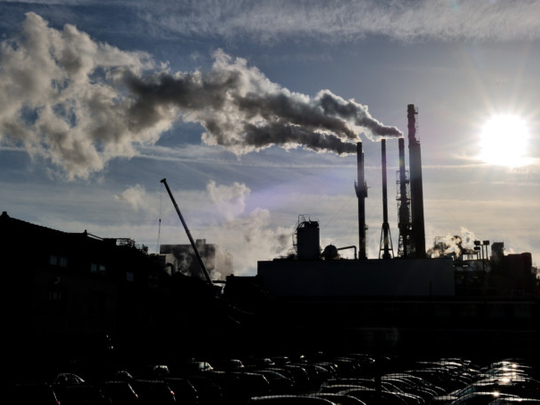
Paris: A snapshot of what scientists are saying about climate change ahead of the next round of UN talks opening in Lima on Monday.
WHERE ARE WE NOW?
Atmospheric levels of three greenhouse gases from burning coal, oil and gas are the highest in 800,000 years.
Global temperatures for the 10-month period from January to October were the hottest on average in 2014 since record-keeping began in 1880.
Since the start of the Industrial Revolution in 1750, about 2,000 billion tonnes of the most plentiful greenhouse gas, carbon dioxide (CO2), have been emitted.
From 1880 to 2012, the global average surface temperature rose by 0.85 degrees Celsius (1.5 degrees Fahrenheit).
The global mean sea level rose by 19 centimetres (7.6 inches) from 1901 to 2010.
WHERE ARE WE HEADING?
Depending on how much carbon is spewed into the atmosphere, the global mean temperature could rise by 0.3 C to 4.8 C this century, and sea levels by 26-82 cm.
Wet countries will become more prone to heavy rain and flooding and dry countries more exposed to drought. Poor tropical countries and small island states will see their coastlines carved away by rising seas.
The impacts could translate into species loss, hunger, homelessness, the spread of disease and wars for natural resources.
WHAT CAN WE DO?
Nations have agreed to limit warming to 2 C over pre-Industrial Revolution levels. A tighter target of 1.5 C comes under review next year.
Meeting these goals carries a cost, as countries have to switch from cheap, plentiful and polluting fossil fuels to cleaner renewable sources.
The UN's Intergovernmental Panel on Climate Change (IPCC) says a 2 C pathway requires annual greenhouse-gas cuts of 40-70 percent by 2050, compared to levels in 2010 - and to zero or below by 2100.
For a "likely", 66-percent, chance of meeting the target, carbon concentrations in the atmosphere should not exceed 450 parts per million of CO2 equivalent (CO2eq) by 2100.
The level was 430 ppm CO2eq in 2011 and heading, on current trends, for 750-1,300 ppm CO2eq by 2100. This leaves a "budget" of about 1,000 billion tonnes of CO2 to emit in total.
SOURCES: The IPCC's 2014 Fifth Assessment Report; October 2014 report by US National Oceanic and Atmospheric Administration (NOAA).











